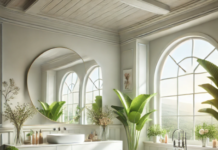Magnolias – Sumptuous and stately, magnolias are among the most handsome of garden trees, as well as being among the hardiest. Magnolia trees are native to East Asia and the Himalayas, eastern North America and Central America. Magnolias grow 40 to 80 feet tall with a spread of 30 to 40 feet. Depending upon the species, magnolias may be evergreen, semi-evergreen or deciduous.
Drawbacks of some of the species are their enormous size, slowness of growth and reluctance to flower until some 20 or more years after planting. Fortunately, most of the modern selections are free from these vices. The deciduous spring-flowerers make excellent features.

Magnolia has dark green, oval shaped leaves that are covered with layer of wax. Leaves are evergreen and they are alternately arranged on the branches. Flower of magnolia has pleasant scent that resembles the smell of tropical fruit. Magnolia blooms from April to June. Color of the flower depends on the species and it can be white, yellow, pinkish, purple and green.
Magnolia planting is best done in areas that provide enough moisture and direct sunlight, in a moist, rich, slightly acidic soil that is amended with compost or leaf mold will get the tree off to a good start. As part of your magnolia tree care, you’ll need to water the trees to keep the soil around the base of the tree moist. It is especially important to keep young trees well-watered until they become established.
Magnolia ‘Pickard’s Schmetterling’ – A spreading tree, this bears goblet-shaped, rich pinkish-purple flowers. The flowers open as the leaves emerge.
Magnolia stellata – Star magnolia is a slow-growing, deciduous species. It is indispensable in a spring garden with masses of beautiful, spidery white flowers. It requires a sheltered spot.

Magnolias































